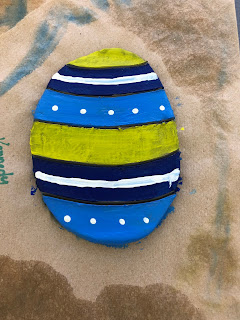Paper Mosaic

This lesson required the students to identify what positive and negative space is. They utilized the negative and positive space by placing their pieces of paper over their mosaic "tiles". Materials needed were; paper tiles, scissors, glue, mod podge, paint brush, and a large sheet of construction paper. After they would cut out their positive and negative space out of construction paper. For most of the project, they needed to cover their background, or big construction piece, with their mosaic tiles and mod podge. When they were finished covering their background, they needed to add on their positive and negative sheets. One requirement was the positives need to be kitty-corner from each other and the same with the negatives. To finish the project, they covered the entire project with mod podge to create a nice shiny surface. For an extension activity, they could create a paper mosaic in the shape of a heart for Valentines Day as a gift for their parents or someone they...





